20 Things I’ve Learned That Save Money While Traveling in Europe
We post a lot of deals for airfare and hotels and talk a lot about credit card points, but that’s all about getting there. How can you save money once you’re actually there and still have an amazing vacation?
We post a lot of deals for airfare and hotels and talk a lot about credit card points, but that’s all about getting there. How can you save money once you’re actually there and still have an amazing vacation?
Now that I’ve been at this frugal travel thing awhile with several European cities under my belt, I have a set of rules, tips and tricks that I use to save money while I’m exploring a new city.
1) If you’re taking a cab from the airport, always go to the taxi stand.

I prefer to take public transit when I can, but when I’m tired and lugging two roller bags and a purse over cobblestones through an unfamiliar city where they may or may not speak English, paying the cab fare is totally worth it. Should you decide on a similar approach, do your wallet a favor and make a bee line for the airport’s official taxi stand.
That sounds simple enough, right? Well, hold on a moment, because in many European airports, you’ll encounter a number of “taxi drivers” hanging out between baggage claim and the taxi line, offering to let you skip the line. DON’T DO IT. The best case scenario for these guys is that you’ll pay far more than is customary for your ride. Worst case is that they are criminals who will drive you somewhere dangerous and rob you blind. Either way, they’re a bad idea. Avoid eye contact, give them a firm no, and get in line for a proper cab.
Uber also operates in major European cities at reasonable rates, so that’s a completely valid option as well.
2) Take public transit.
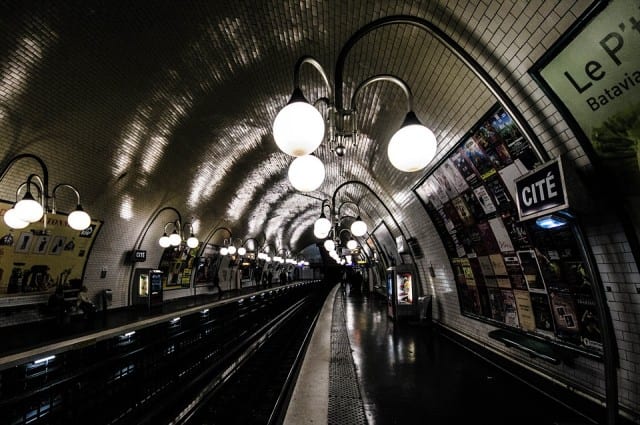
The Paris Metro is incredibly efficient and goes everywhere. No matter where in Paris you are, you’re never more than 200 yards from a Metro station.
While Paris is particularly excellent at public transit, just about every major city has it, and it’s always cheaper than a cab. Opt for unlimited multi-day passes so you can hop on and off as much as you like.
Another reason I strongly recommend public transit has nothing to do with my budget and everything to do how empowering it is when I’ve figured out how it all works using a map written in a language I don’t speak. After that, I get to pretend I’m one of the locals nonchalantly riding the train to wherever.
3) Walk everywhere that you can.
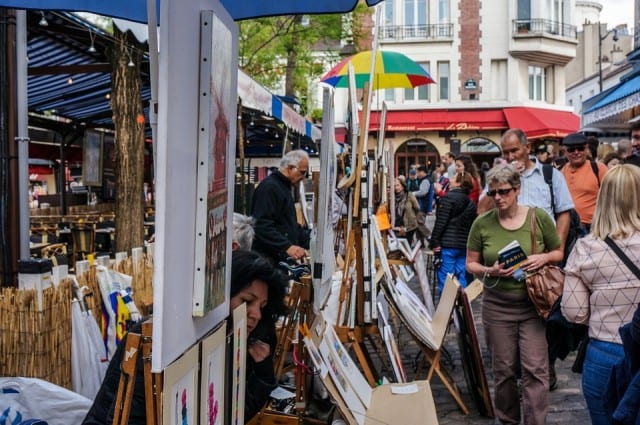
You’re in Paris! Or Barcelona, Rome, Prague, or Vienna… you’re in these gorgeous old cities where the buildings in which you’re eating, sleeping and shopping often have been standing for longer than Europeans have known that our continent even existed! So walk to dinner. Walk to the next museum on your agenda. Walk for no apparent reason other than you’re there and it’s a golden opportunity to take in all of the beauty and charm. Soak it up, because you may never be here in this magical place ever again.
Oh, and you avoid cab fare, too, of course.
4) You probably shouldn’t tip anyone most of the time.
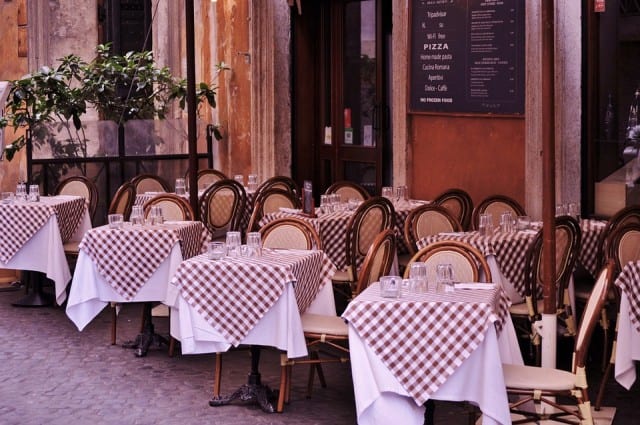
Don’t tip your waiter, he’ll look at you like you’re from another planet.
Tipping is a practice in which we Americans are unusual. In Europe, servers, taxi drivers, and everyone else is paid full wages, and it’s nearly universal that a service fee will be included in your bill. I know it’s tough to break out of the mindset that we’re stiffing a server if we don’t leave 15-20%, but honestly the rest of the world thinks we’re crazy when we do.
If you got really great service or your American guilt is too strong, leave a few coins on the table, but never more than €1. In the rare event that service is not included, 5-10% is appropriate, and Rick Steves points out that 10% is considered large. Anything more than that is really just throwing money away on an obscure American custom that no one else in the world actually follows.
5) Eat lunch from carts.

The best pizza I ever had and still have dreams about came off a food cart just outside Pompeii’s exit gate. And if you’re in France, you should be legally barred from boarding a flight home until you’ve had a crepe from a street vendor. Mmm, Nutella crepes… Honestly, if you’re not hung up on sitting down for a meal, food carts are a very affordable and tasty way to get lunch on the fly.
6) Eat Middle Eastern.
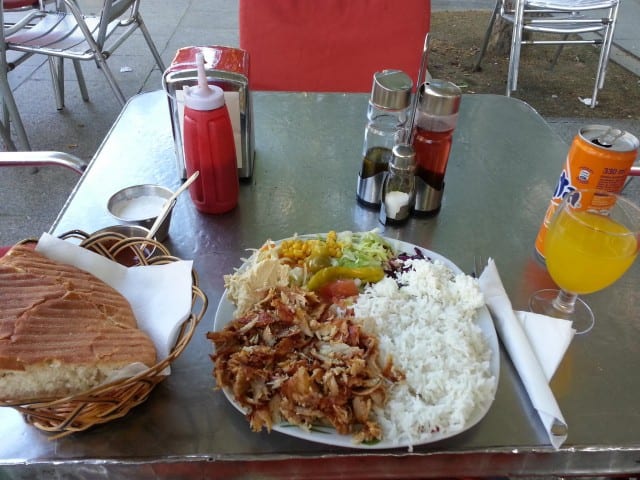
Mediterranean food in Barcelona – inexpensive and kind of amazing.
I have a knack for unintentionally renting flats above Pakistani restaurants in neighborhoods with a high number of Middle Eastern restaurants.
Most notably, in Barcelona, Las Ramblas del Raval is lined with them, and it’s also true for many major European cities thanks to the influx of immigrants from Eastern Mediterranean countries in recent years. All of them are cheap since the prices haven’t been jacked up for paella-crazed tourists, and by and large completely blow away the shwarma we get in the United States.
7) Enjoy the wine.
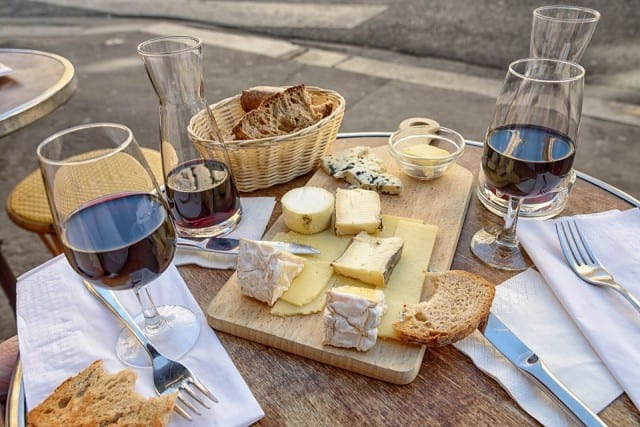
Like French wine? It’s €3 a bottle at the neighborhood Carrefour.
Seriously, I’ve had amazing wine in Spain, France and Italy, and all of it was cheaper than soda – so cheap, in fact, that in the United States we’d instantly distrust it and write it off as swill based on the price alone. I capped my night off with a glass from that €3 bottle every night, and it was wonderful.
By the way, if you’re looking for a cheap souvenir gift that the recipient will actually appreciate, skip the chintzy fridge magnets and stash a €3 bottle of wine in your luggage. Trust me on this. No one needs to know it only cost you some pocket change.
8) Always drink at bar instead of at a table.

This one was actually new to me in Paris, a great tip passed on to us by a wonderful tour guide. Coffee at the bar often costs half as much than the same coffee at a table. Same for any drink, and possibly for food if you can order it at the bar. This is now a permanent rule on my list.
9) Linger over dinner.

In America, dinner is treated like something to inhale in the 10 minutes between soccer practice and math homework. In Europe, dinner is an event unto itself. There’s no rush, so take your time and savor it. The French in particular take their food very seriously. It deserves your full attention.
But why am I including it on a list of money saving travel tips? Because when you linger over a meal that is itself a work of art, you’re not rushing off to spend more of your money on something else.
10) Rent a flat…
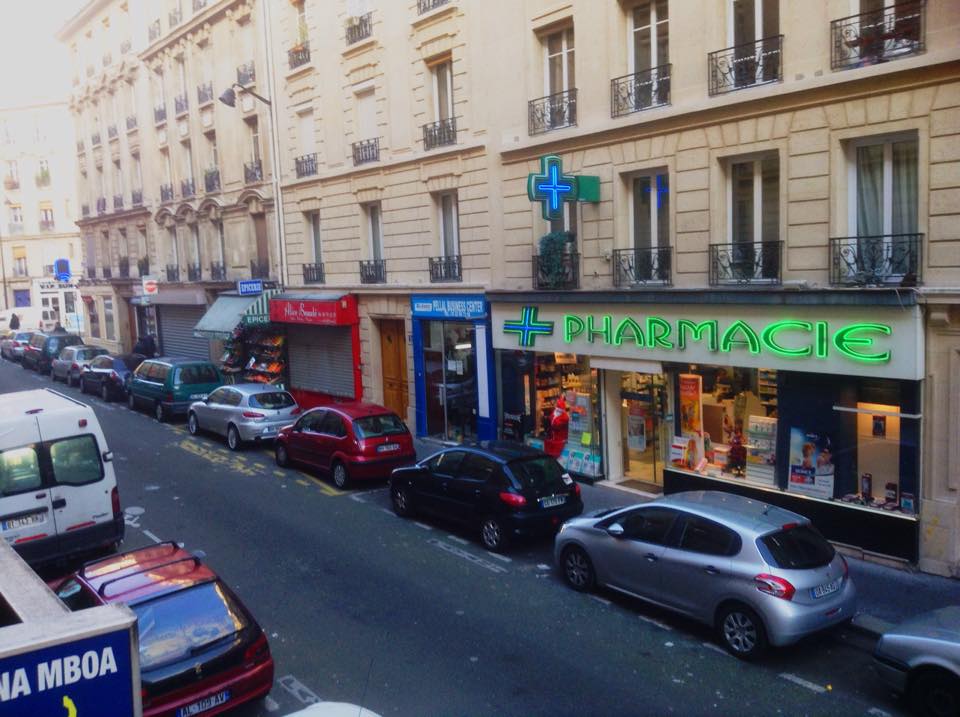
The view from our window in Paris.
I hate staying in hotels when I travel for pleasure. Hotels generally provide very little in the way of actual local flavor. My preferred way to stay in any city is to live like a local. For me, that starts with finding an affordable apartment to rent on Airbnb.
Besides being a more authentic experience, living like a local is more economical. Do you really think the locals are hailing cabs to rush from one tourist attraction to the next and eating every meal in restaurants with jacked up tourist pricing? NOPE.
We all have these romantic visions of lazy days spent in cafes like Amélie’s Café des 2 Moulins (which is now a popular tourist attraction itself), but you won’t find them if you never leave the tourist track. Renting an apartment gets you away from the hotel strip and into the neighborhoods where the locals actually live.
Across the street from our Paris flat was a tiny general store where we bought bananas and the freshest, softest medjool dates I’ve ever eaten, a pharmacy (useful when you run out of the ibuprofen that soothes your sore muscles after a long day of walking), a patisserie on the corner where we loaded up on croissants and pain au chocolat. Call me crazy, but that’s a good deal more authentically French than the hotel’s continental breakfast ever will be.
Finally, there’s the whole question of internet access, which some hotels charge for (unless you have hotel status), or gate it behind timed login screens, or the signal is weak or overloaded with other hotel guests on the network. It can be an absolute pain, and if you’ve ever had to deal with hotel wifi, you understand the agony it can induce. I always look for an Airbnb apartment with wifi. When I show up, the owner gives me the password to their network and it’s a done deal, totally hassle free, and it’s all mine.
If I have any complaints at all about renting flats in Europe, it’s that the bathrooms tend to be incredibly tiny, including showers so small you can’t bend over to touch your feet, accidentally bump the hot water, or knock the door open while trying to shampoo. But it’s a small concession.
11) …and use the kitchen to make your own breakfast.

And then there’s the fact that your hotel room probably doesn’t have its own kitchen. By virtue of this fact, hotels force you to eat out for every meal, or pay to eat in your room at an exorbitant markup. Not only does that get expensive fast, it also deprives you of one of my very favorite European experiences: grocery shopping!
Truly, grocery shopping in a foreign country is an adventure. I love it. In the produce aisle of the neighborhood Carrefour, I found a small box of blueberries and a red berry I didn’t recognize and couldn’t translate (Duolingo never taught me “groseilles.”) But they looked wonderful, so I took the chance. They were red currants! I am now obsessed with currants. Why do we not have these in every grocery store in America?? You’ll also find strange and wonderful new flavors of potato chips to try, that €3 wine I mentioned earlier, and plenty of stuff you’ll recognize that makes a nice dinner when you’re tired and just want to spend a night in.
12) Look for the “free” walking tours.
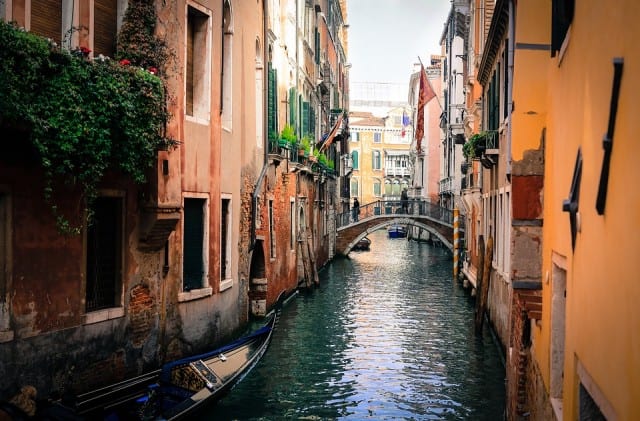
I always like to schedule a tour of some kind for my first full day in the city as a way to get the lay of the land and figure out what I’m most interested in doing. Many tour operators offer a free walking tour, with the explicit caveat that the tourists are expected to tip their guide whatever they feel the tour is worth. (It also comes with a sales pitch for other tours which you do actually have to pay for.) Whatever you end up giving your guide as a tip, it’s far less than you’d pay for any other tour.
13) Google “Free things to do in [your vacation city].”

This should be a no brainer. Hundreds of travelers before you have come and gone and compiled their lists. Plunder them for ideas. They may not always be mainstream, but when they cost you nothing it’s hard to argue.
By the way, it’s pretty much a given that admission to churches like Notre Dame in Paris and St. Peter’s Basilica in Vatican City will be free, though they always appreciate a donation once you’re inside, usually suggested for the privilege of lighting a candle. And why not toss in a few coins to light a candle? You’re in one of the most beautiful churches in the world. If you’re ever going to pray for something, this is a pretty amazing place to do it.
14) Take lots of photos with a really good camera.

Who needs postcards when photos that you took yourself are so much more meaningful? If you have a DSLR, Europe is a dream. Take your time and take gorgeous photos of everything.
When you get home, have high quality prints made and hang them on your walls as art, or paste them in a scrapbook, or make a calendar with them. In my home, I have an “Adventure Wall” which is entirely devoted to small black and white photos I’ve taken in my travels, hung mosaic-style in old picture frames I’ve found in thrift stores.
Then there are the fun photos, of course. Photos of your kids squishing the Eiffel Tower between their fingers. Resting a finger atop the pyramids at the Louvre. Imitating the dramatic pose of a statue. When you’re constantly on the lookout for a good photo opportunity, you start to look at and appreciate your surroundings in an entirely different way.
Plus, you get to decide what to do with the photos when you get home, where photo processing at the local drugstore is pretty cheap.
You can take it even further and turn your vacation photos into a little passive income with stock photography sites like iStock.
15) Spring for the international data plan.
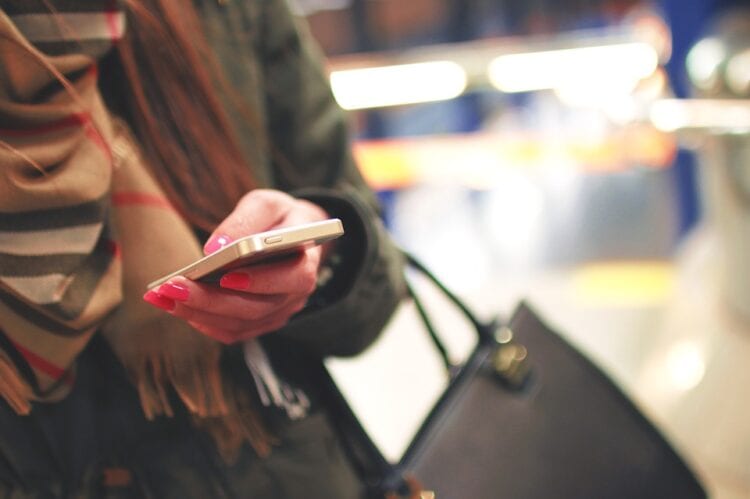
Don’t expect to be doing Facebook check-ins everywhere you go when international roaming data costs $20/MB. Yeah, that’s megabyte with an M. Merely firing up your phone to grab a quick Google Map when you need to find the nearest Metro stop sounds pretty innocuous, but the moment your phone has a data connection all of your apps will try to sync. Email, Facebook, podcasts, weather apps, everything. Next thing you know, your provider is texting you a warning that you’ve exceeded $250 in charges and your data connection has been live for all of 30 seconds. (This has happened to me.)
Or, you can opt in to an international data plan. Verizon’s TravelPass lets you use your existing minutes and data abroad for a flat rate of $10/day, and only charges you if you use it. And if you ignore this advice (or forget about it as I did) and find yourself on the receiving end of one of those warnings, track down your carrier’s international customer service number and give them a call immediately. Verizon is really excellent about applying a new plan retroactively to the beginning of your billing cycle – which was quite a relief.
And trust me, you do need at least a little data. On my first trip to Paris in 2015, before TravelPass existed, we still found ourselves consulting Google Maps 2-3 times daily.
P.S. GPS doesn’t use data, but getting detailed directions does. So if all you need is to see the little blue “you are here” dot on a map, you don’t even need to turn the data on.
On a related note, if you want to call home, use WhatsApp or FaceTime when you have a wifi connection. Calling can get expensive fast if you do it a lot without a good international plan. And instead of texting friends and family at home, use apps like Facebook Messenger, WhatsApp, or Snapchat with your wifi.
16) Never shop or eat anywhere you can shop or eat at home.
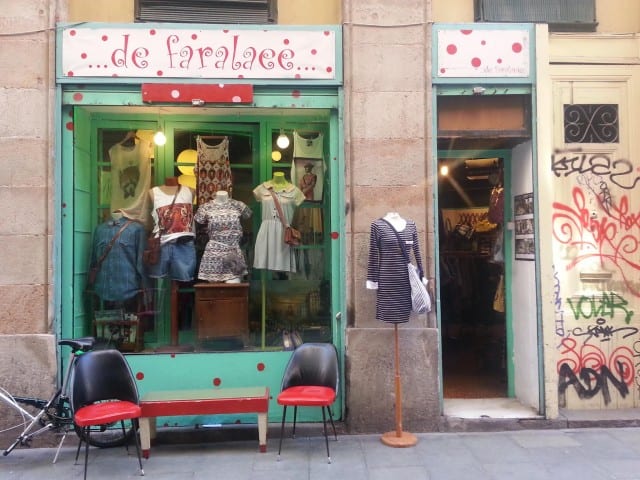
I loved the little indie shops all over Barcelona.
I simply see this as a waste since it’s time and money spent missing out on a unique cultural experience. The one allowance I make here is Starbucks, but only because they have free wifi that works exactly the same as it does in the United States – which is really convenient when you’re watching your data usage but need to look something up online. And hey, if you’re one of those people who collects Starbucks city mugs, it’s going to be worth a stop.
17) Don’t feel obligated to buy gifts for people back home.
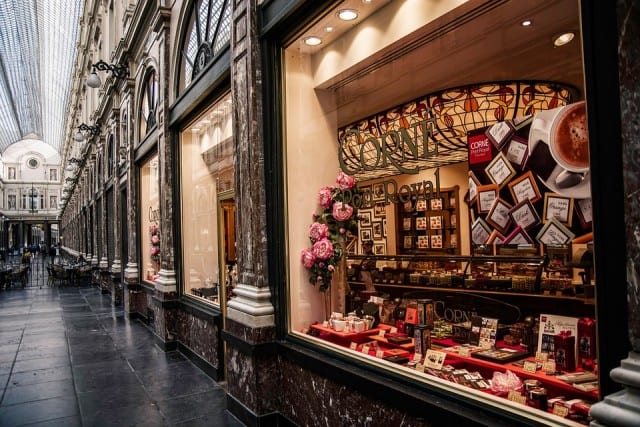
If you have a list of people you feel compelled to buy gifts for, you’ll just stress yourself out and waste time you could spend doing more fun things. Whatever cheesy tchotchke you end up with is just probably destined for the recipient’s junk drawer anyway. And besides, it’s not Christmas!
Instead of making a list of people to buy gifts for, keep a few very close friends and family in mind and then only buy something for them if it’s seriously perfect for them.
To be fair, there are a handful of people I am always going to buy for. Namely my nieces, because they totally have my number. But for the rest of my family, I usually take home a bottle of wine to share over our next family dinner – one that’s a bit nicer than the €3 bottle from Carrefour.
18) When shopping for clothes, head straight for the clearance racks.
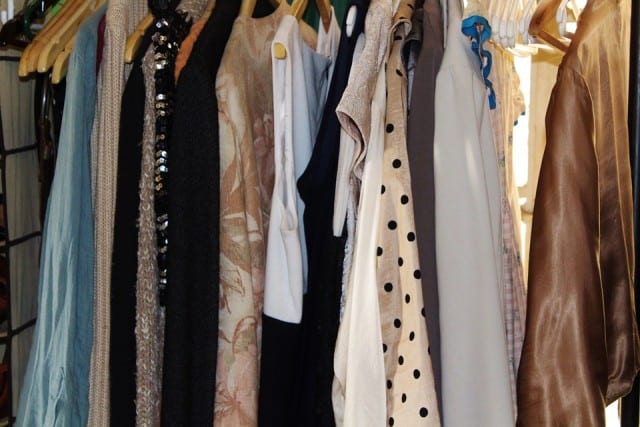
Two of my favorite purchases from Paris are a pair of clearance rack sweaters I found for a total of €45. We were headed to a Metro stop when they caught my eye, and I insisted on stopping to look. Whenever I wear them, if someone compliments them, I get to say, “Thanks, I bought it in Paris!” Likewise, in Rome, I found a black leather blazer marked down to €99. Eleven years later, it’s still one of my favorite jackets, and of course, I get to say I bought it in Rome.
Otherwise, I usually find that high fashion is a waste of money since all the best brands are equally available in the United States. American girls mostly are wearing the same outfits as French girls, and everyone has a Louis Vuitton bag on their arm. How boring. If I can find it on Michigan Avenue back home in Chicago, it really doesn’t interest me, but a random sale rack of inexpensive sweaters stuck out on the sidewalk in front of a tiny store next to the Metro? Yes, please!
19) Add 20% to any price given in Euros to see how much it’s really costing you.
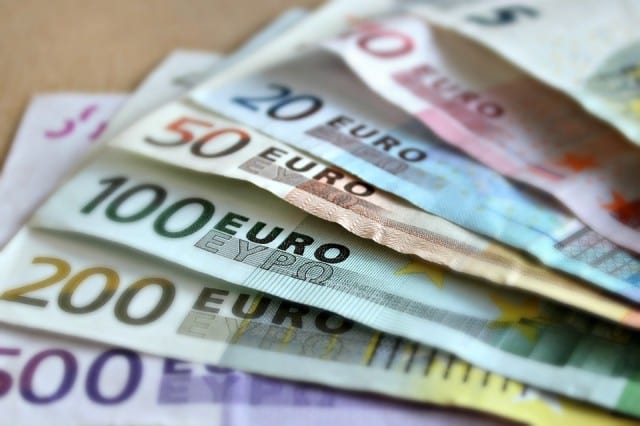
As of the date of this post, it takes $1.18 to buy €1. Though the number fluctuates a bit, it tends to hover somewhere around $1.20/€1.
Knowing this, converting Euros to U.S. dollars in your head is easy if you think of it like adding a 20% tip to everything you buy – and since we’ve already established that Americans are crazy tippers, it follows that we all already know how to do that. (If you don’t, here’s a pretty good tutorial.)
For example, a €20 bottle of wine costs about $24. The €25 ticket to get to the top of the Eiffel Tower is roughly $30. That €700 handbag you fell in love with on Champs-Élysées? $840 (ouch).
It may not be a precise trick given foreign exchange rate fluctuations, but it will get you in the ballpark so you’re not completely shocked to discover you’ve blown through your budget faster than you thought.
One more tip for shopping abroad: Make sure you’re using a credit card with low or no foreign transaction fees. Check out our list of the best credit cards for international travel to get a few expert recommendations.
20) Use Yelp to find dinner.

Yelp is my go-to app when it comes to finding restaurants wherever I happen to be traveling. I usually zoom the map into a distance I can reasonably walk, then filter by rating and price to find the golden intersection of good and cheap.
That’s how I found a small, relatively empty restaurant just off a bustling tourist square in Montmartre. It was just a little quirky and quintessentially French. I pointed to the only thing on the menu I didn’t recognize (“dorade”) and decided to order it. I read a bit of my book and sipped a glass of wine while waiting for my dinner, which turned out to be a white ocean fish with mushroom risotto. I loved the music they were playing, which my server was happy to tell me was Belleruche. The whole experience was perfect and relatively inexpensive.
Then I went home and found Belleruche on Spotify, and it’s now my unofficial Paris soundtrack. It’s a perfect souvenir.
